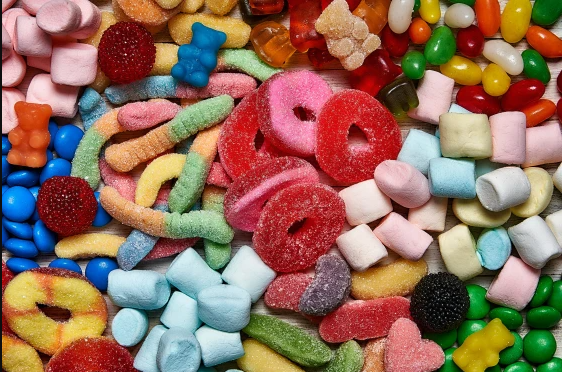Colorful candies and cereals, cheese ‘singles’ brighter than the color of any real cheese…mac n’ cheese without any real dairy, these are the food staples of my childhood and adolescence. Though I am still standing, I am also battling a highly aggressive form of Colon Cancer. Not blaming the artificial food coloring dyes or preservatives, but the data on both has been troubling for decades now.
I am a capitalist, and want companies large and small to make a profit. American food manufacturers began using food coloring and dyes in the early 1900s. The U.S. government first allowed food dyes for butter and cheese. Many of the earliest artificial colors and dyes were derived from coal tar, a toxic byproduct of burning coal to produce energy. Coal Tar plants, which ran power stations were subsequently taken out of service or banned, due to a variety of negative environmental impacts, and the food industry shifted to petroleum-based dyes in large measure.
Due to health concerns and numerous studies linking these dyes to cancer, the European Union and Canada banned the use of most petroleum based artificial dyes during the 2000 teens. Yellow 5, Red 40 and six others dyes - used to enhance products from Froot Loops to Nutri-Grain cereal bars - are called the " rainbow of risk" by the Center for Science in the Public Interest. They were banned in Norway, Finland, France, Austria and the U.K. in Jun 25, 2013. Gatorade is not sold in most European countries due to the use of Yellow dyes #5 and #6. There are of course natural alternatives, yet big food will repeatedly cite consumers and especially children PREFERRING brighter colored food and products.
The most popular color additives are Red #40 (patent number), Yellow #5 and Yellow #6, making up almost 90% of all food dye used in the United States, according to Healthline. Artificial food dye consumption in the U.S. has increased by 500% over the past 50 years.
Perhaps if the packaging contained cancer warnings like cigarettes, those preferences would quickly wane. Froot Loops cereal in the U.S. remain much BRIGHTER and possibly even tastier…as well as having the real potential of being more deadly with long term consumption.
There is plenty of precedent for prior banning of toxic dyes – including the earlier prohibition of use of Red #1,2, 4 and 32. Yellow #1,2,3 and 4. Violet #1, Orange #1 and 2, and my favorites (in terms of the name), Sudan #1 and Butter Yellow (banned in 1919).
Longtime plaintiff attorney, and now Secretary of Health & Human Services, Robert F. Kennedy, Jr. announced plans earlier this spring to ban all petroleum based dyes and artificial food colorings from the U.S. food supply. Kennedy has been winning multi-million judgments for similar concerns with Big Food for decades. And before those regulations are even in draft form, Heinz/Kraft Foods and General Mills, two of the larger players in the industry globally, have announced their proactive phase-out and removal of these dyes in all of their product lines by 2027. So within two years, though Kraft Singles won’t actually be Cheese, and its Mac n’ Cheese will no longer contain petroleum by products, healthier options like Tumeric will become coloring staples.
However the cereal King, Kellog’s recently sold and M&M/Mars, one of the world’s largest candy and confection manufacturers are still clinging to the toxic dyes. M&M says that its candies won't look or preserve as well using natural/organic products. Thank you for making it easier for me to leave behind my beloved M&M Peanuts. And Froot Loops and Toucan Sam will continue to share that same toxic rainbow, we expect for years to come.
I of course routinely comment here when I think the Trump Administration has miss-stepped. This is instead a call for applause and tip of the hat, for protecting American health, and holding Big Food accountable, particularly for products aimed at children. We recognize good deeds here as well as the bad.
Start taking your readers with you when Grocery Shopping and feel safer knowing that will soon only be actually organic tomato coloring inside Heinz Ketchup and other beloved brand staples, but know that the phase out will take some time and is not yet universal. This is one BAD DYE JOB that really completely needs to go.

http://accesswdun.com/article/2025/7/1293421/ending-a-bad-dye-job
